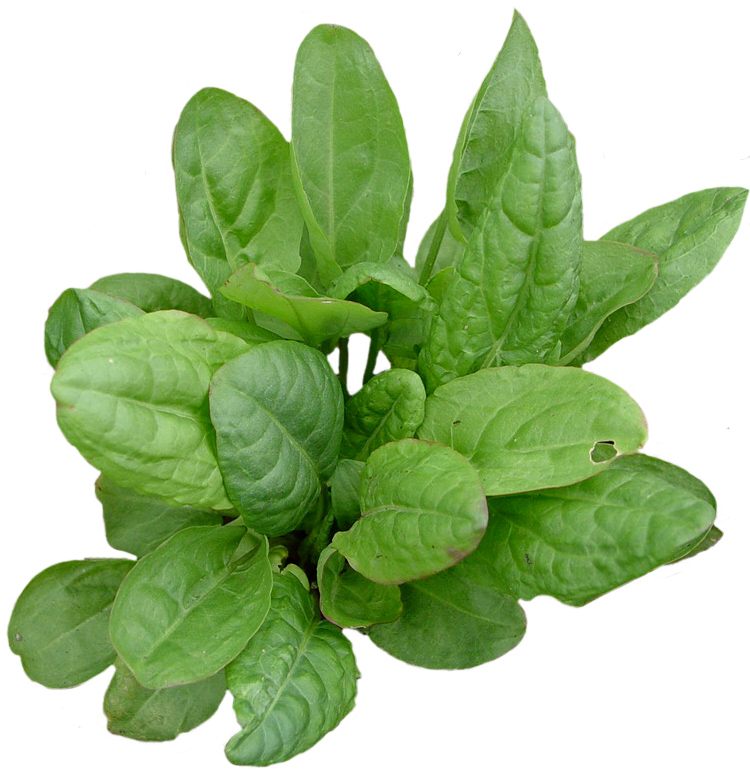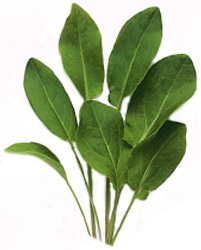

Sorrel

Rumex. (Name used by Pliny.) DOCK; SORREL. Polygonaceae. Some 200 species of annual, biennial or perennial herbs, rarely shrubs, often with stout roots or rhizomes. Leaves commonly basal, sometimes alterante and cauline, variously shaped, becoming progressively smaller above. Flowers small, unisexual or bisexual, wind-pollinated, clustered in terminal racemes or panicles, green often flushed pink, red or rust; tepals 6, outer 3 small and inconspicuous, inner 3 becoming enlarged in fruit, 1-3 with corky tubercle at base or centre; stamens 6; styles 3, stigma star-shaped. Fruit a 3-angled achene, enclosed by woody or papery pericarp. N temperate regions. CultivationRumex hydrolapathum, occurring on pond and stream banks, is sometimes grown for its tall red brown flower spikes and long smooth leaves which develop rich bronze red colours in autumn; a robust perennial for waterside plantings, especially in informal and naturalistic landscapes. Rumex flexuosus is valued for its copper tinted foliage and may self seed where conditions suit. Rumex alpinus, formerly used as a pot herb, is occasionally grown for the showy inflorescence, while Rumex sanguineus, with crimson-veined leaves, is of some value in the border or in the kitchen garden for its edible leaves. The seed heads and flowers of most species can be dried for winter arrangements, the colours of the seed heads varying from gold through red brown to chestnut, depending on species and ripeness when cut. Ornamental species require similar treatment in cultivation as for Rheum. Rumex acetosa (common sorrel) and the more drought-tolerant Rumex scutatus (French sorrel) are valued for their sharply acid-flavoured leaves, more definately lemony in Rumex scutatus, used raw in salads and cooked as for spinach. Treated as annuals or short-term perennials (replace every third or fourth year), they are easily grown and have a long harvesting season which, with a little protection can be extended to cover most of the year. Grow in the sun in any moderately fertile and well-drained soil. Sow seed in spring and thin to 10cm, where the whole plant is to be harvested or to 25cm for perennial crops. Leaves can be harvested about eight weeks after sowing. Rumex acetosaCOMMON SORREL; GARDEN SORREL; SOUR DOCK. Somewhat succulent, glabrous, perennial tufted herb to 60cm. Leaves to 14cm, all basal, sagittate, long-petioled to sessile. Flowers unisexual in an erect leafless panicle; male flowers crowded in clusters of 4-8. N temperate and arctic regions. ‘Blonde de Lyon’: leaves large, slightly acidic. Z3. Rumex sanguineus
Perennial to 1m; stems erect, slender, often tinged purple or red. Leaves 5-15 x 2-5cm, oblong, acute, veined purple or blood red. Flowers in few-branched panicles; perianth red, tepals 2.5-3mm, oblong, becoming brown when ripe, soon falling. Europe, SW Asia, N Africa. Z6. Rumex scutatusFRENCH SORREL; GARDEN SORREL. Low perennial to 45cm; stems ascending or prostrate, branching from base, sometimes hardening to slightly woody. Leaves 1-5.5cm, ovate to cordate becoming hastate, acute to pandurate and obtuse on stem; petiole long; stipules conspicuous, silvery. Flowers unisexual and bisexual, in loose, sparingly branched inflorescence; inner tepals rounded, cordate, around 5mm, ripening pink to pale brown in fruit, membranous, conspicuously veined. Fruit 3.5mm. Summer. Europe, W Asia, N Africa. ‘Silver’: habit spreading, forming a mound to 60cm; leaves pale, heart-shaped, edged and veined green. ‘Silver Shield’: habit low, dense, to 45cm; leaves silver, heart-shaped; flowers green. Z6. Other members of the genus Rumex are cultivated for their garden interest. The three species featured here are those found to be the most popular for culinary use.
|
Home
Grow Nuts
Grow Fruit
Grow Vegetables
Cyberian Index
If you like this website and want one of your own contact
Cyberian All information correct at
time of publication and open to updates as necessary. No part of this website,
or its vectors, may be produced in any shape or form, using any type or design
of medium, system, equipment or otherwise without the prior written consensual
notice of the Cyberian. Any breach of these requirements will result in the
appropriate action. If in doubt, e-mail contact is recommended.
Some components of this website were obtained as open-source software and are
used in the same non-profit manner on this website.